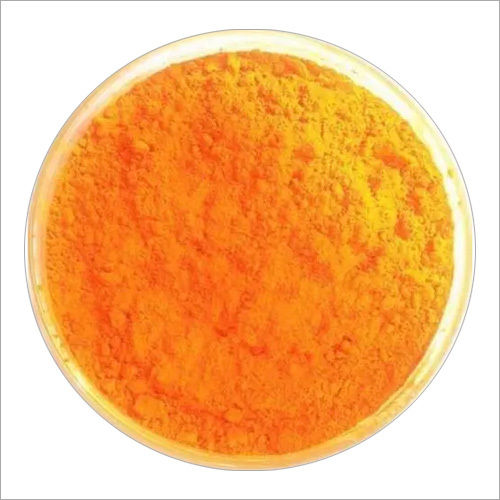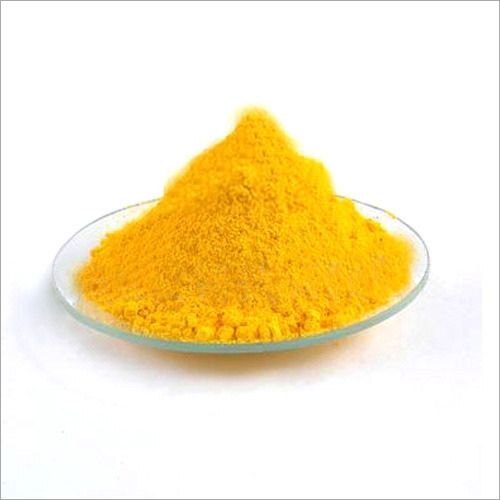Direct Chrysophenine G
Direct Chrysophenine G Trade Information
- Minimum Order Quantity
- 500 Kilograms
- Supply Ability
- 100 Kilograms Per Day
- Delivery Time
- 1 Week
- Sample Available
- Yes
- Packaging Details
- Cargo packing
- Main Domestic Market
- All India
About Direct Chrysophenine G
Direct Chrysophenine G is used as a colorant for paper, leather, cellulose fibers, and polyamide fibers. This chemical is available in moisture-proof packaging options to ensure its long shelf life. It is suitable for flax, cotton, jute, acetate, viscose rayon and other cellulosic fibers. Our offered powder is applicable on leather and paper coloration. Also, this powder is available in standard color and specifications. Furthermore, our provided Direct Chrysophenine G is suitable for dying purpose.
Features:
- Solvable in water
- Perfect composition
- Safe to use
Certainly Heres a detailed description of Direct Chrysophenine G
Direct Chrysophenine G A Comprehensive Overview
Direct Chrysophenine G is a synthetic dye that plays a significant role in the textile and dyeing industry Renowned for its vivid yellowishgreen or yellow hue it falls into the category of direct dyes These dyes are celebrated for their ease of application on cellulosic fibers such as cotton without the requirement of a mordant This comprehensive description aims to delve deep into the properties applications environmental considerations regulations and historical context of Direct Chrysophenine G
Chemical Structure and Properties
Direct Chrysophenine G is a member of the direct dye family characterized by its anionic nature Its chemical structure features a chromophore group responsible for its coloration The chromophore is a conjugated system of alternating single and double bonds which absorbs specific wavelengths of light resulting in its vibrant yellow or yellowishgreen appearance
The dyes solubility in water is a notable attribute allowing for straightforward application to textiles This watersolubility arises from the presence of sulfonic acid groups in its molecular structure These groups also facilitate the dyes affinity for cellulosic fibers
Color Characteristics
The color imparted by Direct Chrysophenine G can be described as a cheerful and lively yellowishgreen or yellow depending on its concentration and the dyeing process The shade may vary slightly between different manufacturers and formulations
This vibrant coloration has made Direct Chrysophenine G a popular choice for various textile applications from fashion apparel to home textiles Its ability to produce bright and attractive colors on fabrics makes it a valuable tool for textile designers and manufacturers
Applications in the Textile Industry
Direct Chrysophenine Gs primary application lies in the textile industry where it serves as a versatile dye for cellulosic fibers Cotton in particular is a favorite substrate for this dye due to its ease of use and compatibility The dye can also be applied to other cellulosic fibers like linen and rayon as well as to proteinbased fibers such as silk and wool although with varying degrees of success
Direct dyes like Chrysophenine G are especially favored for their simplicity in application They can be used in various dyeing methods including dipping padding and exhaust dyeing During the dyeing process the dye molecules penetrate the textile fibers and establish a bond resulting in the desired coloration
Colorfastness and AfterTreatment
While Direct Chrysophenine G offers brilliant and vibrant colors it is important to address colorfastness concerns Direct dyes in general may not exhibit the same level of washfastness and lightfastness as other types of dyes such as reactive or disperse dyes Consequently it is imperative to follow proper dyeing and aftertreatment processes to enhance the colors longevity and resistance to fading
After dyeing textiles may undergo treatments such as washing rinsing and fixation to remove any excess dye and improve colorfastness These processes help in reducing the risk of color bleeding and fading during subsequent washes
Environmental Considerations
The environmental impact of Direct Chrysophenine G like many synthetic dyes has garnered attention During the dyeing process some dye molecules can be released into wastewater posing potential environmental concerns The discharge of untreated wastewater containing dye residues can lead to water pollution and adverse effects on aquatic ecosystems
Efforts have been made in recent years to develop more environmentally friendly dyeing methods and dyes Sustainable practices including the use of ecofriendly dyes water recycling and wastewater treatment have gained prominence in the textile industry Manufacturers and researchers are continually working on developing dye formulations that are less harmful to the environment
Regulations and Safety
The use of dyes in the textile industry is subject to regulations and safety standards which vary by region and country These regulations encompass aspects such as toxicity environmental impact and safety for workers handling the dyes
Manufacturers and textile professionals must adhere to these regulations to ensure the safe and responsible use of Direct Chrysophenine G and other dyes Compliance with these standards is crucial to protect both the environment and the health of individuals involved in the dyeing process
Historical Context
The history of dyeing dates back thousands of years with the use of natural dyes from plants insects and minerals However the development of synthetic dyes including Direct Chrysophenine G revolutionized the textile industry in the late 19th and early 20th centuries
The discovery and commercial production of synthetic dyes marked a significant shift in the coloration of textiles It allowed for a broader spectrum of colors greater color consistency and enhanced colorfastness compared to natural dyes This innovation fueled the growth of the textile and fashion industries enabling designers to explore new creative possibilities
Today Direct Chrysophenine G stands as a testament to the ongoing evolution of dyes and their pivotal role in the world of textiles It continues to be a valued tool for textile professionals contributing to the diverse and colorful array of fabrics available in the market
Conclusion
Direct Chrysophenine G with its brilliant yellowishgreen or yellow color is a prominent member of the direct dye family Its application on cellulosic fibers particularly cotton has made it a staple in the textile industry While offering vibrant colors it is essential to address colorfastness and environmental considerations Regulations and safety standards guide its use ensuring responsible and sustainable practices
In the historical context the development of synthetic dyes like Direct Chrysophenine G has played a pivotal role in shaping the textile and fashion industries These dyes have enabled the creation of a diverse and colorful range of textiles contributing to the world of design and selfexpression


Price:
- 50
- 100
- 200
- 250
- 500
- 1000+
More Products in Direct Chrysophenine Category
Direct Chrysophenine G ( Direct Yellow 12)
Price 30 INR / Kilograms
Minimum Order Quantity : 500 Kilograms
Physical Form : Powder
Grade : Industrial
Application : Dye Intermediates
 |
SHIVAM CHEMICALS
All Rights Reserved.(Terms of Use) Developed and Managed by Infocom Network Private Limited. |



